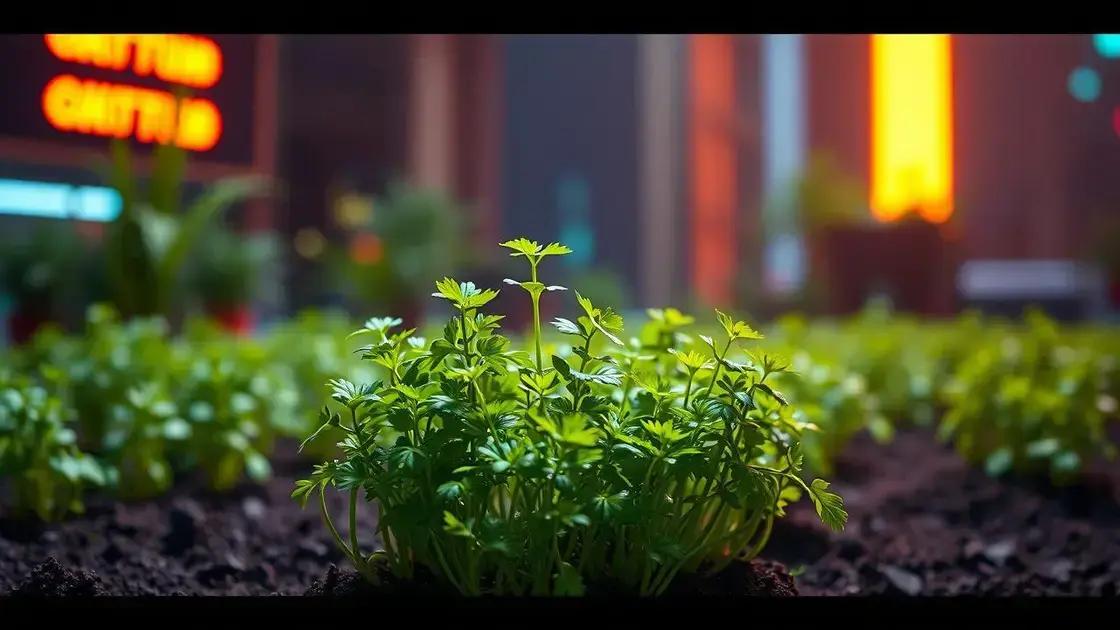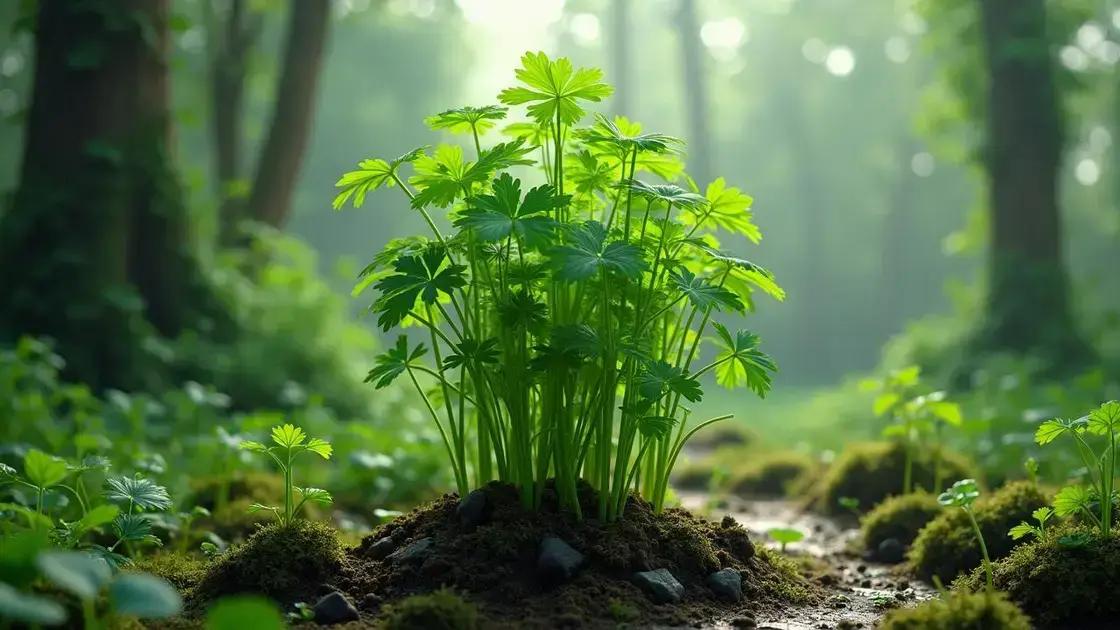How to Care for a Coriander Plant: 5 Simple Tips for Success
How to care for a coriander plant isn’t just about watering; it’s a pathway to green-thumb success. Ever wondered why some herbs flourish while others barely survive? You’re about to discover the secrets that will transform your coriander experience. Get ready to explore the essentials that ensure healthy growth and vibrant flavor!
Table of Contents
ToggleUnderstanding the ideal soil needs for coriander
Understanding the ideal soil needs for coriander is essential for nurturing healthy and flavorful plants. Coriander thrives best in well-draining soil that mimics its natural environment. To achieve optimal growth, it’s important to consider the following soil characteristics:
Soil composition
- Loamy soil: A mix of sand, silt, and clay that provides good drainage and fertility.
- pH level: Ideally between 6.2 to 6.8, allowing for nutrient uptake.
- Organic matter: Incorporating compost or well-rotted manure improves soil structure and nutrient content.
Soil preparation tips
- Test the current pH level of your soil using a soil testing kit.
- Add organic compost to enrich the soil, enhancing its texture and fertility.
- Ensure good drainage by mixing in sand or perlite if needed.
Choosing the right location
When planning to grow coriander, the location affects soil quality. Select a spot that receives at least 4-6 hours of direct sunlight each day. This helps in maintaining a favorable temperature for germination and growth. If you encounter challenges with space, consider exploring indoor gardening techniques to cultivate your coriander.
Common soil problems and solutions
| Problem | Solution |
|---|---|
| Compacted soil | Loosen with a garden fork and mix in organic material. |
| Excess moisture | Add sand to improve drainage or raise the planting area. |
| Poor drainage | Use raised beds or install drainage systems where needed. |
By understanding these key factors, you can create an environment that supports robust coriander growth, resulting in a bountiful harvest filled with flavor.
Coriander plant watering tips for optimal growth

Coriander plant watering tips for optimal growth are essential to ensure your herbs thrive. Watering is a crucial part of maintaining healthy coriander plants and can significantly impact their flavor and health.
Understanding watering needs
Coriander prefers moderate moisture levels in its soil. Too much or too little water can hinder growth, leading to problems such as wilting or root rot. Here’s what to consider:
- Soil moisture: Ensure the soil remains consistently moist but not soggy.
- Weather conditions: Adjust watering frequency based on temperature and humidity levels.
- Plant age: Young plants may require more frequent watering than established ones.
Watering frequency guidelines
- Check the soil with your finger; if it feels dry up to an inch down, it’s time to water.
- In hot, dry weather, consider watering daily, especially for younger plants.
- During cooler months or in shaded areas, reduce watering to every 2-3 days.
Best practices for watering
Adopting the right watering techniques can greatly affect the success of your coriander. Some effective practices include:
- Water early in the morning or late in the afternoon to minimize evaporation.
- Use a gentle watering can or a drip irrigation system to avoid disturbing the soil.
- Focus on moistening the soil and avoid splashing water on the leaves to prevent fungal diseases.
Common questions about watering coriander
| Question | Answer |
|---|---|
| How do I know if my coriander needs watering? | Check if the top inch of soil feels dry; it’s time to water. |
| Can I overwater coriander? | Yes, overwatering can lead to root rot; always ensure proper drainage. |
| Should I water coriander in winter? | Yes, but reduce the frequency and check soil moisture regularly. |
Caring for your coriander’s watering needs is vital for achieving an abundant harvest. By incorporating these tips, you can ensure your plants remain healthy and flavorful, whether you’re growing them in your garden or indoors. For more information on maximizing your green space, consider exploring indoor gardening techniques.
Dealing with common coriander plant problems
Dealing with common coriander plant problems is vital for maintaining a productive herb garden. Often, coriander plants face various issues that can affect their health and yield. By understanding these problems, you can take action to ensure your plants thrive.
Identifying common issues
It’s essential to recognize the signs of trouble early. Here are some typical problems you may encounter:
- Wilting leaves: This can occur due to over or underwatering.
- Yellowing leaves: Indicates possible nutrient deficiencies or pests.
- Bolting: Coriander can quickly flower and go to seed when stressed, especially in hot weather.
Solutions for common symptoms
- Wilting leaves: Adjust watering to maintain consistent soil moisture.
- Yellowing leaves: Fertilize your plant with a balanced, water-soluble fertilizer.
- Bolting prevention: Provide partial shade during hot weather and regular watering to keep the soil cool.
Common pests and diseases
Coriander plants can also fall victim to pest infestations and diseases:
- Aphids: Small insects that suck sap, leading to leaf curling.
- Leaf spot: Fungal disease causing dark spots on leaves, often due to excessive moisture.
- Spider mites: Tiny pests that create webbing and cause leaf discoloration.
Pest control methods
| Pest | Control Method |
|---|---|
| Aphids | Introduce beneficial insects like ladybugs or use insecticidal soap. |
| Leaf spot | Improve airflow around plants, avoid overhead watering, and remove affected leaves. |
| Spider mites | Increase humidity or wash plants with water to remove webs and insects. |
By proactively dealing with common coriander plant problems, you’ll enhance the health and productivity of your herbs. Don’t hesitate to leverage resources, such as exploring indoor gardening techniques, to further strengthen your gardening practices.
In conclusion
How to care for a coriander plant encompasses several key aspects to ensure its success, from understanding soil needs to effective watering practices. By addressing common problems and implementing appropriate solutions, you can cultivate vibrant and flavorful coriander. Remember that maintaining a healthy garden is an ongoing process that benefits from continuous learning and adaptation. For additional resources and tips on enhancing your indoor garden, explore various gardening communities and expert advice.

